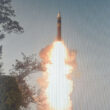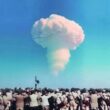Silver linings, ominous clouds
By Sadia Tasleem, June 20, 2013
In her first Roundtable essay my colleague Manpreet Sethi analyzed the tactical and strategic levels of US policy on nuclear proliferation and terrorism and concluded that, in principle, the United States is on the right track. But she went on to argue that US policy runs into problems where implementation is concerned — and she provided Pakistan as an example of the policy’s limits. Specifically, she wrote that the United States has not taken "meaningful punitive action" against Pakistan despite "ample evidence that Pakistan has been involved in nuclear proliferation — and that the army and Inter-Services Intelligence … have supported and fomented terrorism."
But nothing in US policy suggests that the United States ought to have taken punitive action against Pakistan. In the 2010 Nuclear Posture Review, the United States renewed a commitment "to hold fully accountable any state … that supports or enables terrorist efforts to obtain or use weapons of mass destruction… ." Pakistan is not such a state. Even if one accepts that Pakistan has been involved in proliferation in the past, or believes that elements within Pakistan have supported and fomented terrorism, Pakistan still cannot be accused of doing the one thing that might subject it to the "punitive action" that Sethi discussed — helping terrorists gain access to weapons of mass destruction. The element of US policy under discussion in this Roundtable simply bears no direct relation to Pakistani behavior.
Having said that, it is also worth remembering that the revelations almost a decade ago about the proliferation activities of the A.Q. Khan network had a silver lining in Pakistan: International pressure in general and US pressure in particular impressed on Islamabad that nuclearization entails serious responsibilities. Pakistan reacted by introducing a host of nuclear security measures and now cooperates with many global initiatives meant to deny terrorists access to nuclear facilities and sensitive materials. Pakistan today is in the midst of probably the worst wave of terrorism it has ever faced, but through it all has succeeded in safeguarding its nuclear sites and materials. This should not be the basis for complacency. But it should at least ease anxieties about the safety and security of Pakistan’s nuclear arsenal.
Meanwhile, in his second essay, Evgeny Buzhinsky discussed my belief that the United States, by linking nuclear deterrence with terrorism, overrates the effectiveness of deterrence and seems from an outsider's perspective to reinforce the value that US security policy accords to nuclear weapons. Buzhinsky took me to mean that I consider the linkage of nuclear deterrence and terrorism to be artificial, "just one more pretext for the United States to continue relying heavily on its nuclear arsenal." That is not quite correct. I do not believe that the linkage is artificial — but I do believe that it is ineffective, insofar as its ends and its operational means are out of proportion. I also believe that the linkage does more to harm than help the cause of nonproliferation, no matter what the Obama administration’s intentions might be.
Buzhinsky also mentioned my assertion that linking nuclear deterrence with terrorism creates, in states with small nuclear arsenals, serious challenges for proponents of nonproliferation and disarmament. Buzhinsky wrote that "I suppose … she is referring first of all to her own country, Pakistan." I was not referring to Pakistan first — my comment was general in nature — but certainly Pakistan is no exception to the idea that nations with small nuclear arsenals will not be motivated to disarm by a perception that the United States accords great security value to nuclear weapons. At the same time, US nuclear policy is by no means the main driver of proliferation or of failure to disarm. Nuclear enthusiasts can find plenty of justifications for establishing or expanding nuclear arsenals.
Finally, Buzhinsky and Sethi discussed issues such as the US ballistic missile defense program, and the superiority in conventional arms that the United States enjoys, in terms of the challenges they pose to nonproliferation and disarmament. I would add that the same issues are at work in South Asia. India’s program for ballistic missile defense and the region’s growing asymmetry in conventional military capability bode ill for arms control in the region.
Topics: Nuclear Weapons
Share: [addthis tool="addthis_inline_share_toolbox"]














